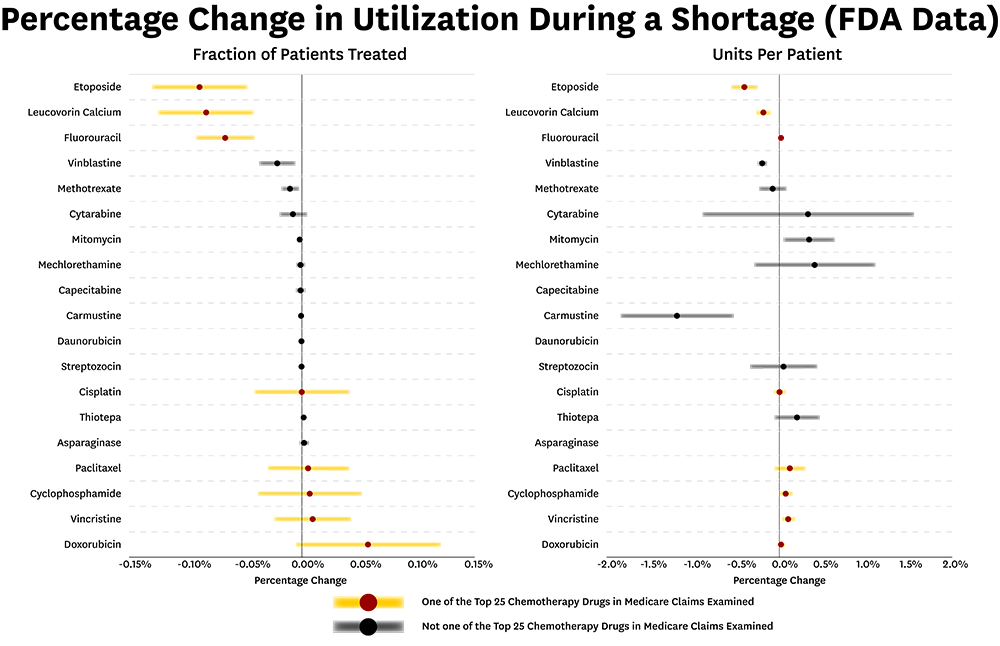This research was published in Clinical Pharmacology & Therapeutics. The full study can be found here. A press release about the study is here.
Citation: Alpert, A., & Jacobson, M. (2019). Impact of Oncology Drug Shortages on Chemotherapy Treatment. Clinical Pharmacology & Therapeutics.
Abstract
Prescription drug shortages began to increase markedly in the mid‐2000s, including sterile injectable products such as chemotherapy drugs. Using Medicare claims linked to Surveillance Epidemiology and End Results (SEER), we examined outpatient chemotherapy use during shortage periods relative to the months before and after a shortage for newly diagnosed patients with breast, colorectal, leukemia, lung, lymphoma, ovarian, or pancreatic cancer (N = 182,470). For most drugs, we found little impact of shortages on either the fraction of patients receiving that drug or the quantity provided. In some cases, we found declines in utilization: 4% for doxorubicin and fluorouracil; 2.9% for oxaliplatin; and about 1% for cytarabine, dacarbazine, and leuprolide. Although shortages for a few drugs resulted in substantial reductions in use, in most cases, they resulted in little to no reduction. We discuss potential explanations for these counterintuitive findings, including potential limitations of current drug shortage reporting methods.


You must be logged in to post a comment.